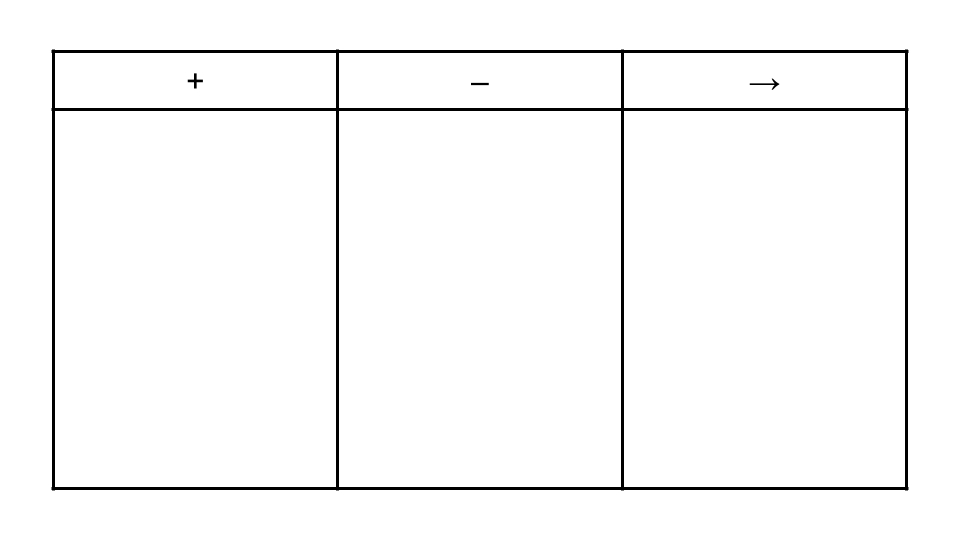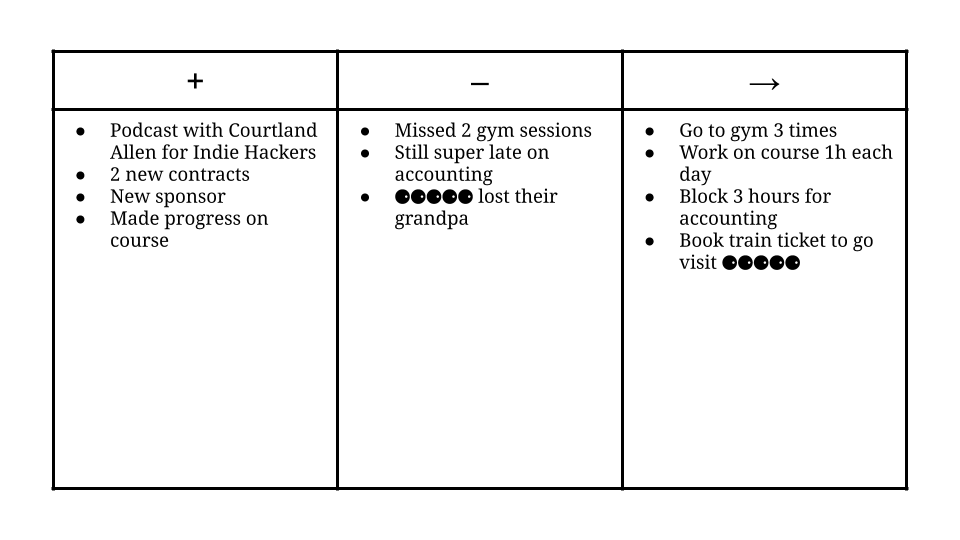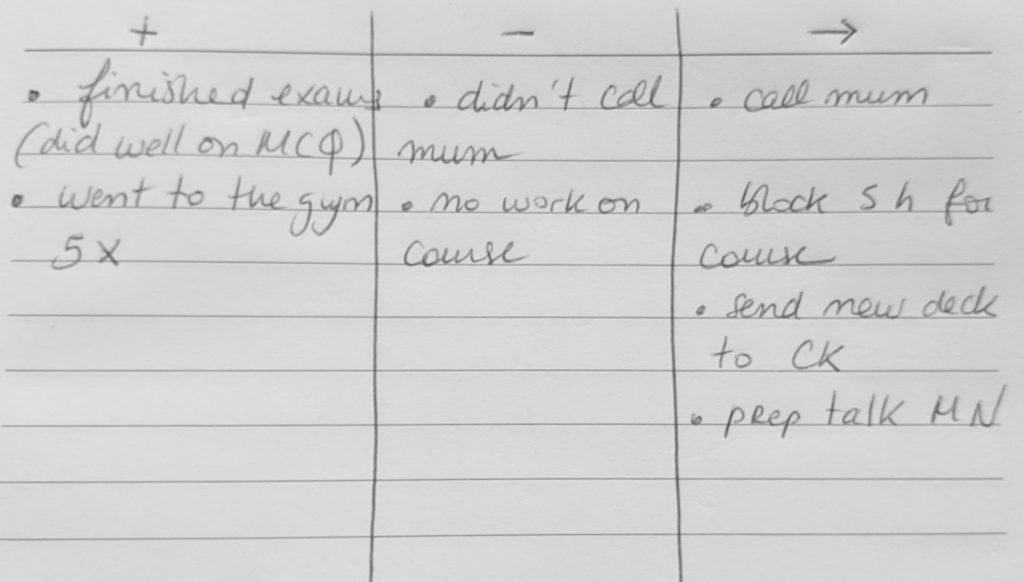At this point, most people know about the benefits of journaling. Read any self-development blog and you will stumble on at least one article telling you why keeping a journal will change your life.
The problem? Most people can’t build the habit. We know we should keep a journal. But we don’t know how to keep a journal. I have tried most of the journaling methods out there—one line a day, free writing, doodling, the bullet journal—and none worked for me. None of them felt goal-oriented enough, and some of them required too much work.
So I made my own journaling method. It’s dead simple, it may not work for everyone, but it’s perfect for me and I’ve managed to stick with it. I call it “plus minus next” journaling—and it does what it says on the tin.
What worked, what didn’t, what’s next
This method can work with whichever medium you prefer, but since I’m a big fan of handwriting, let’s pretend you have a notebook. Open your notebook, write the date at the top of a page, and draw three columns. At the top of each column, write “+” for what worked, “–” for what didn’t go so well, and “→” for what you plan to do next. This is what it should look like:

Then, fill it with events from the past week. I personally like to do this on Sunday evening, when it’s quiet at home, but some people do it on Monday morning to start the week on the right foot. Feel free to add professional and personal stuff in there. Whatever went well or made you happy goes in the first column; any negative events or inaction on your part in the second column; and all plans for the following week in the last column. Here is an example from this week:

As you can see, Plus Minus Next journaling is a very flexible system. I’m not necessarily trying to tie next week’s plans to what didn’t work the previous week. I’m not trying to rank things in order of importance. I just let my mind flow and write anything I can think of.

When I have too many tasks in the “next” column, I use the Eisenhower matrix to make sure my focus is on important tasks. This allows me to discard anything that’s not important and not urgent.
The benefits of Plus Minus Next journaling
There is no perfect journaling method, and you may have already found an approach that works for you. But if you still struggle with journaling, you may want to give this method a try.
- Fast. Filling your weekly page shouldn’t take more than 5 minutes. A few bullet points, and you’re done. The column that should take the longest is the “next” one as you should take a couple minutes to reflect on what happened the past week to better decide where to focus the following week.
- Flexible. This method works for all areas of your life. No need to separate the personal from the professional. Every area of our lives is interconnected, so should be the way we journal. Some weeks, you may not have much to say about work, and that’s fine. Other weeks, it may be all work-related items. That’s fine too.
- Future-focused. Instead of dwelling too much on stuff that didn’t work, Plus Minus Next journaling is about acknowledging the negative in a productive way. Didn’t finish that project you were planning on shipping last week? Don’t beat yourself up, just make it a priority next week. If it keeps on happening, run a quick motivation clinic to understand the underlying causes.
That’s it. Please let me know if you give it a try!
